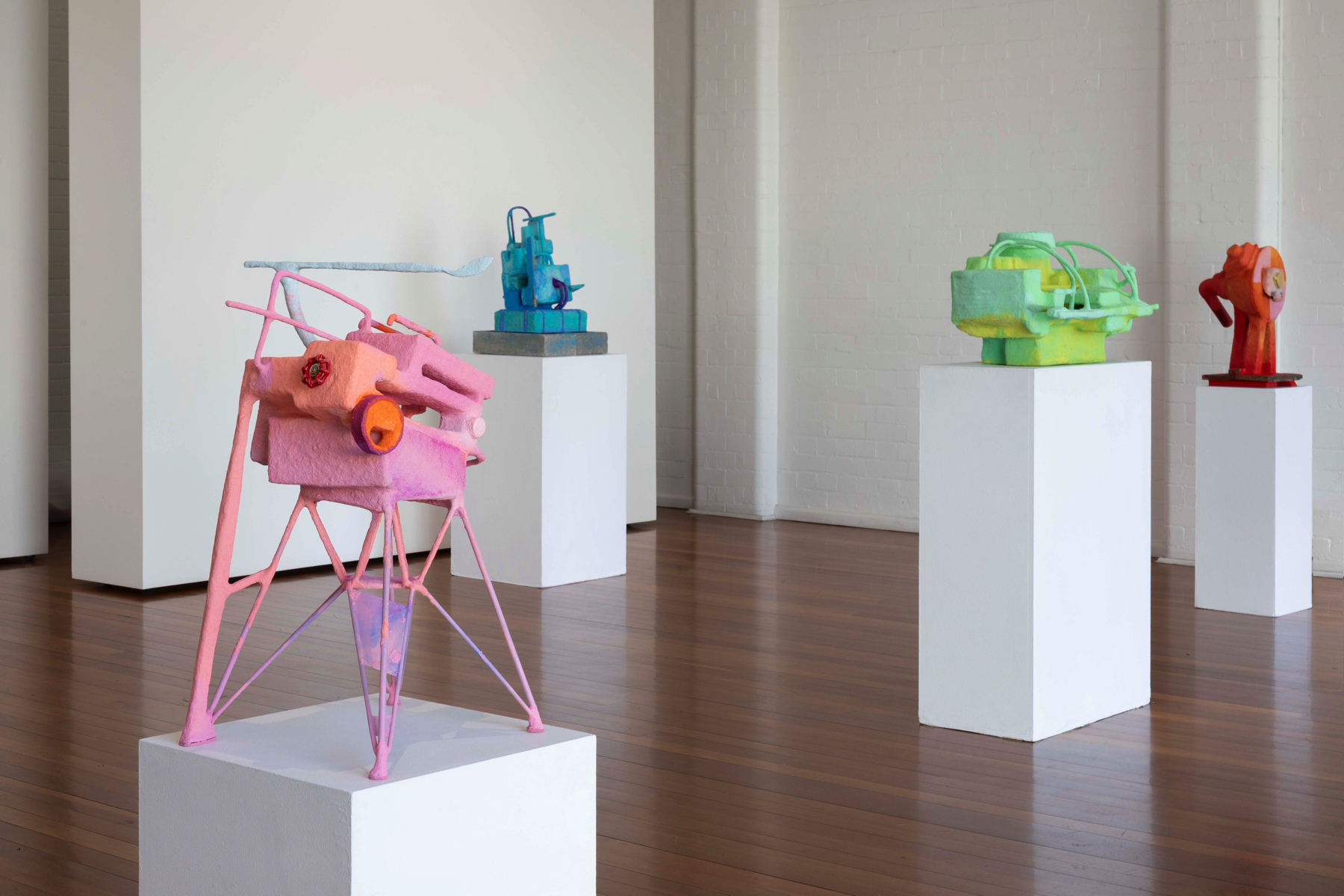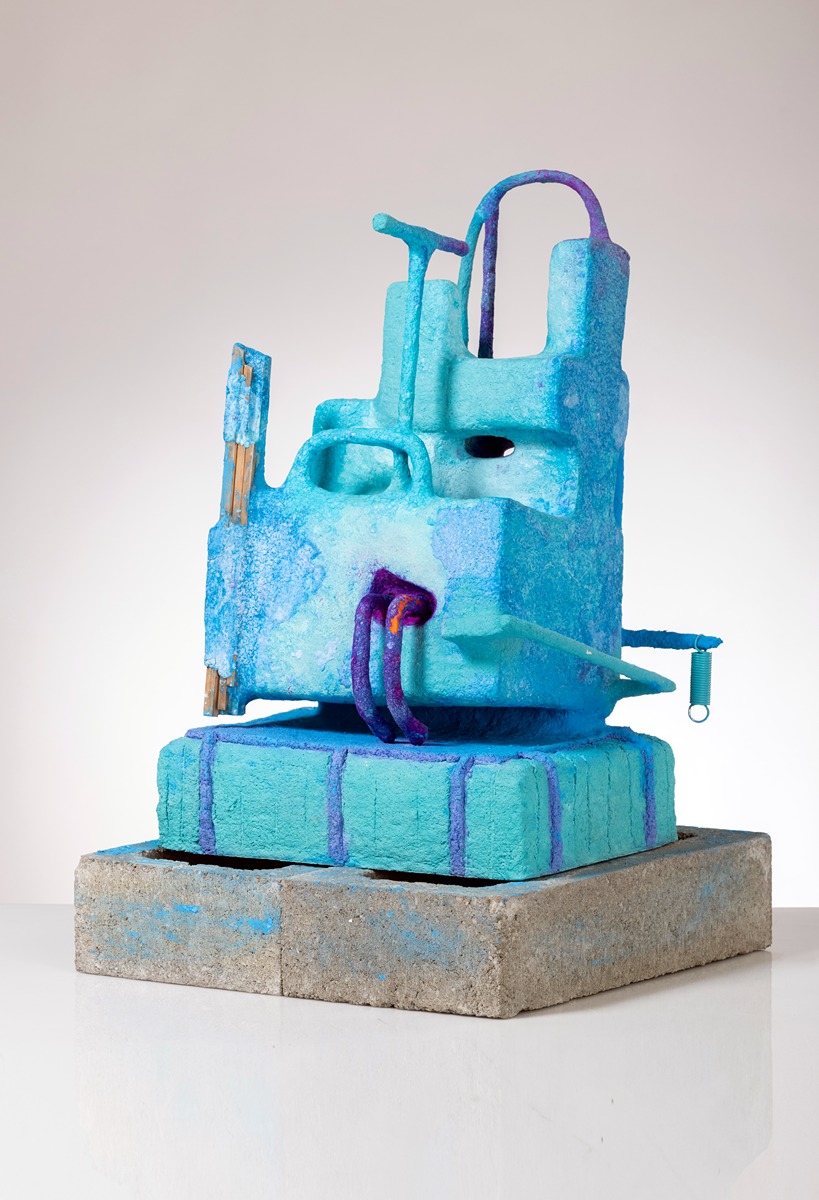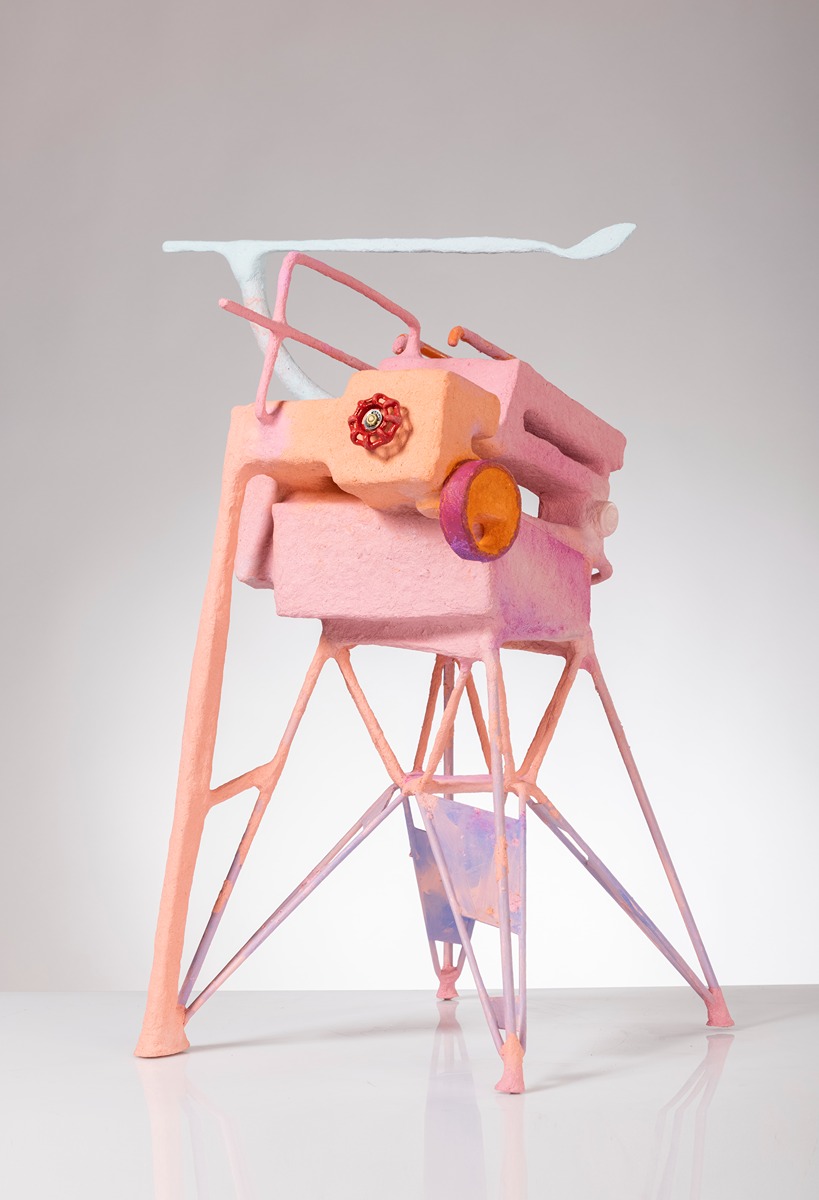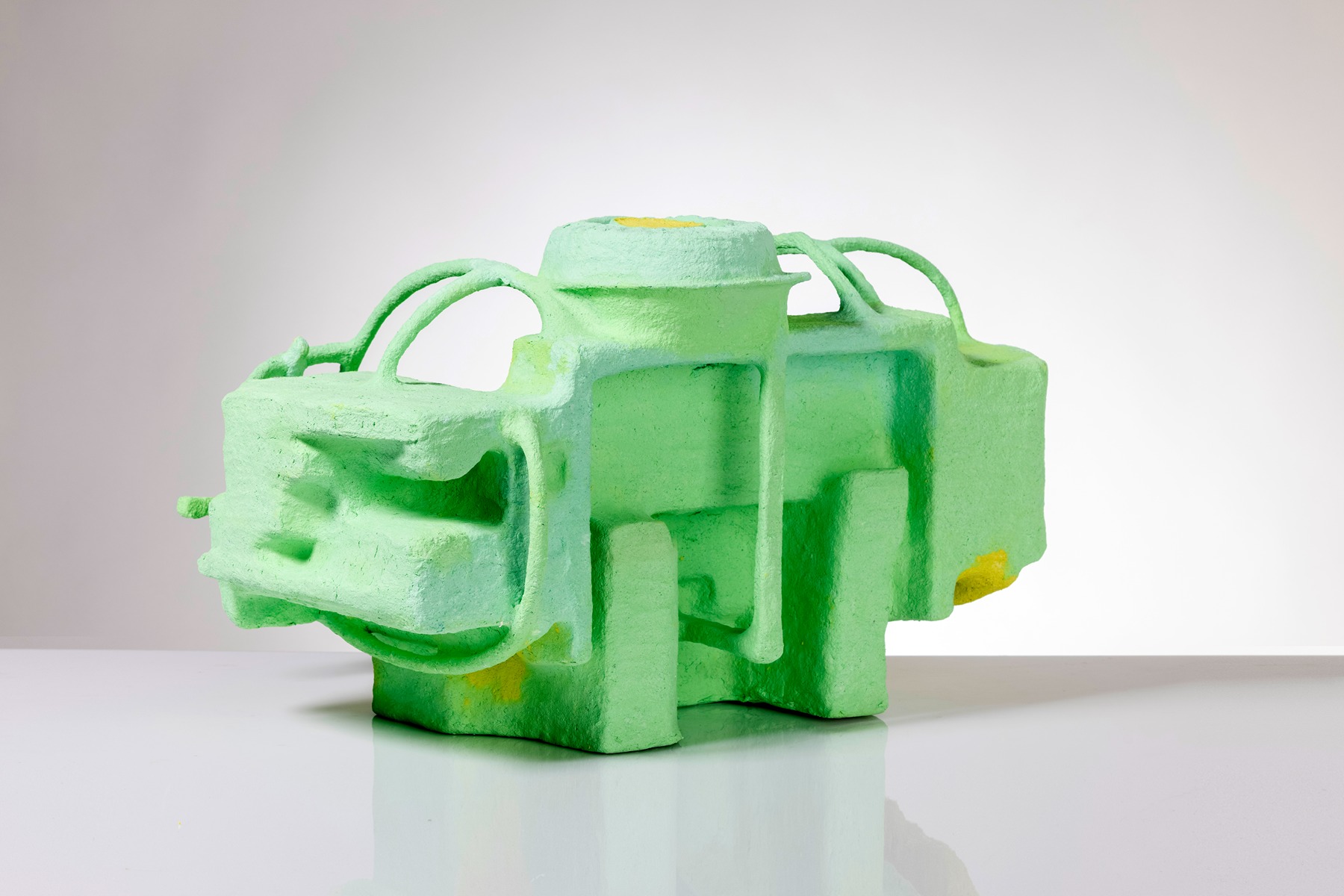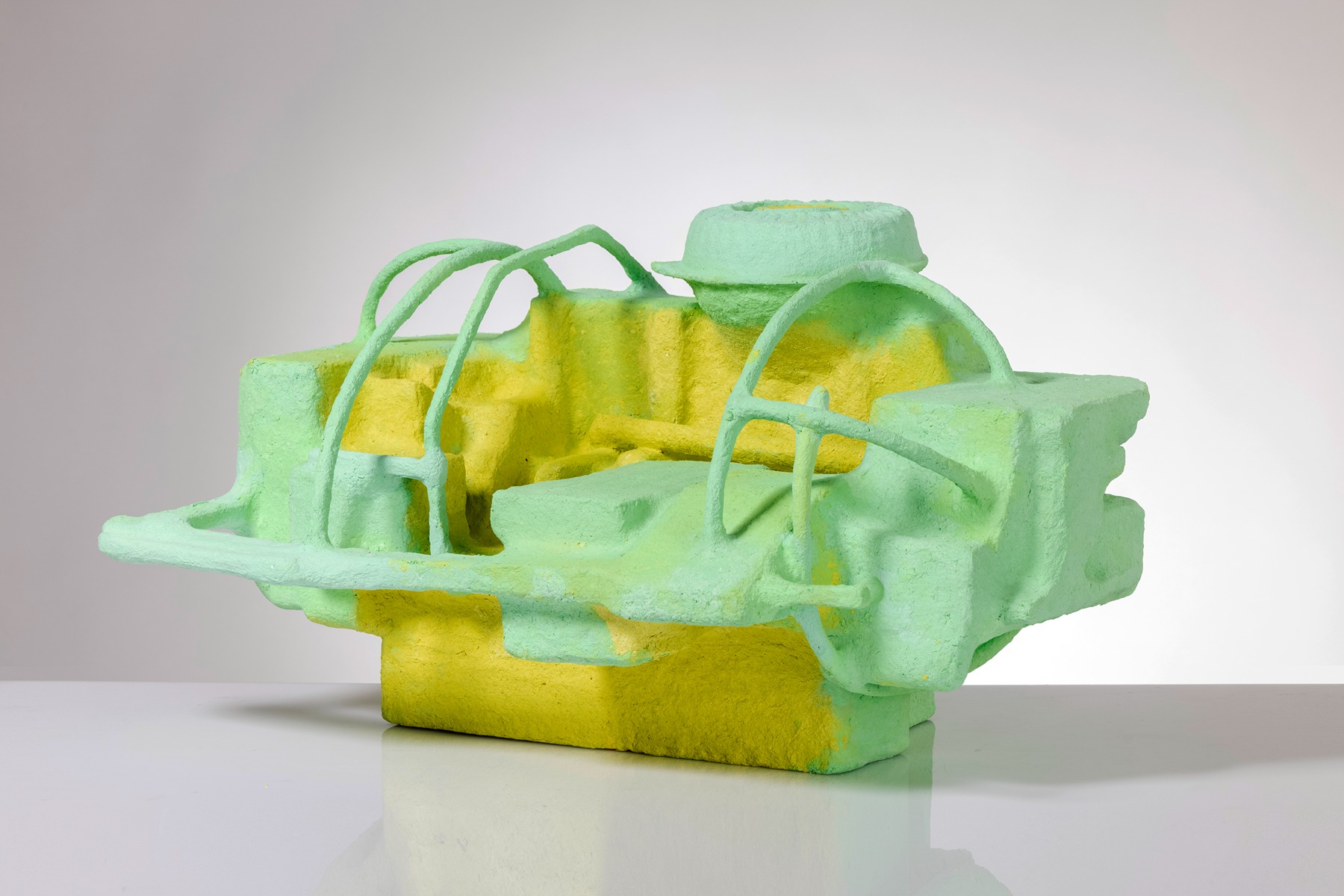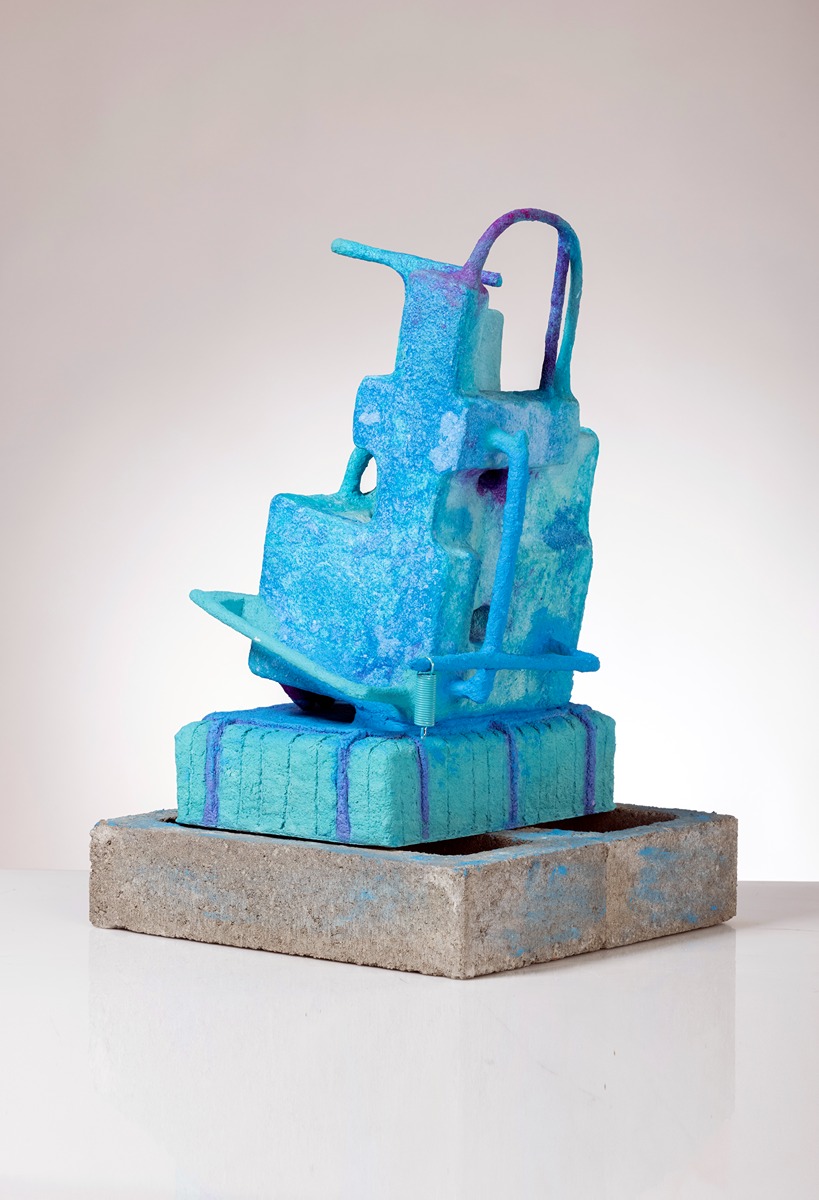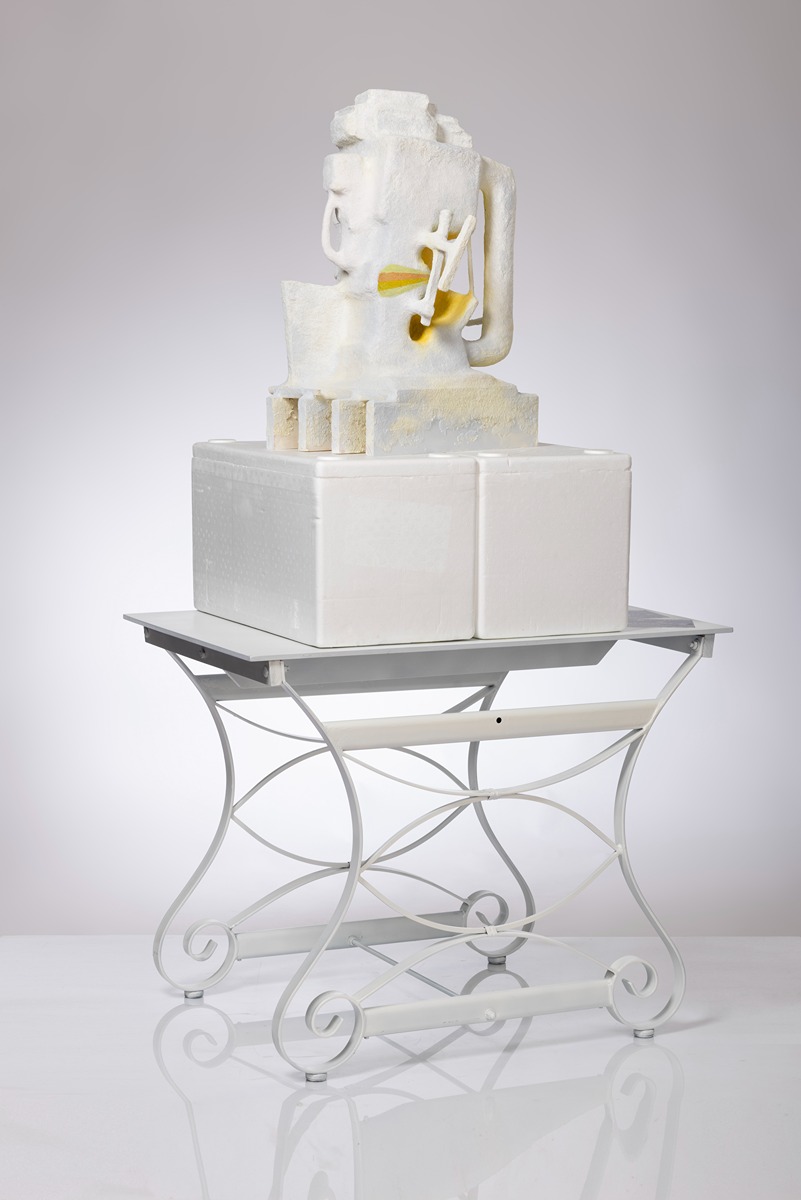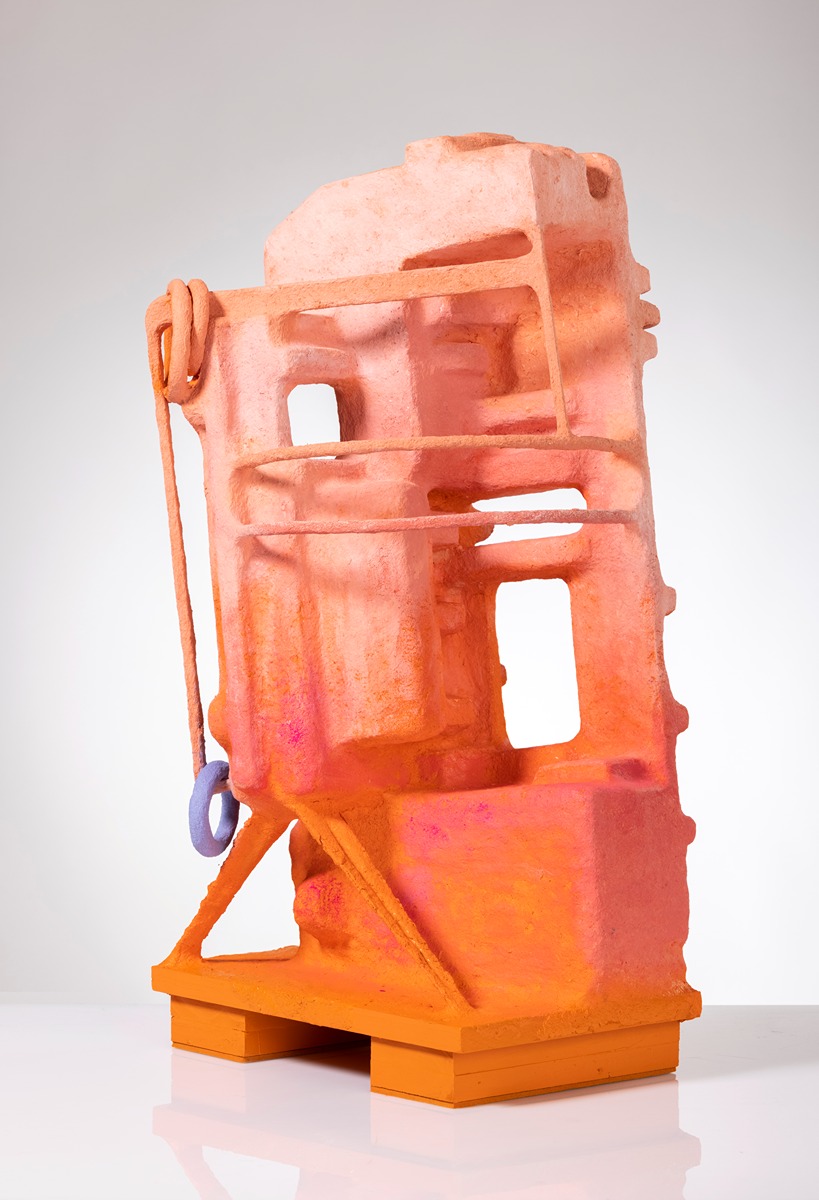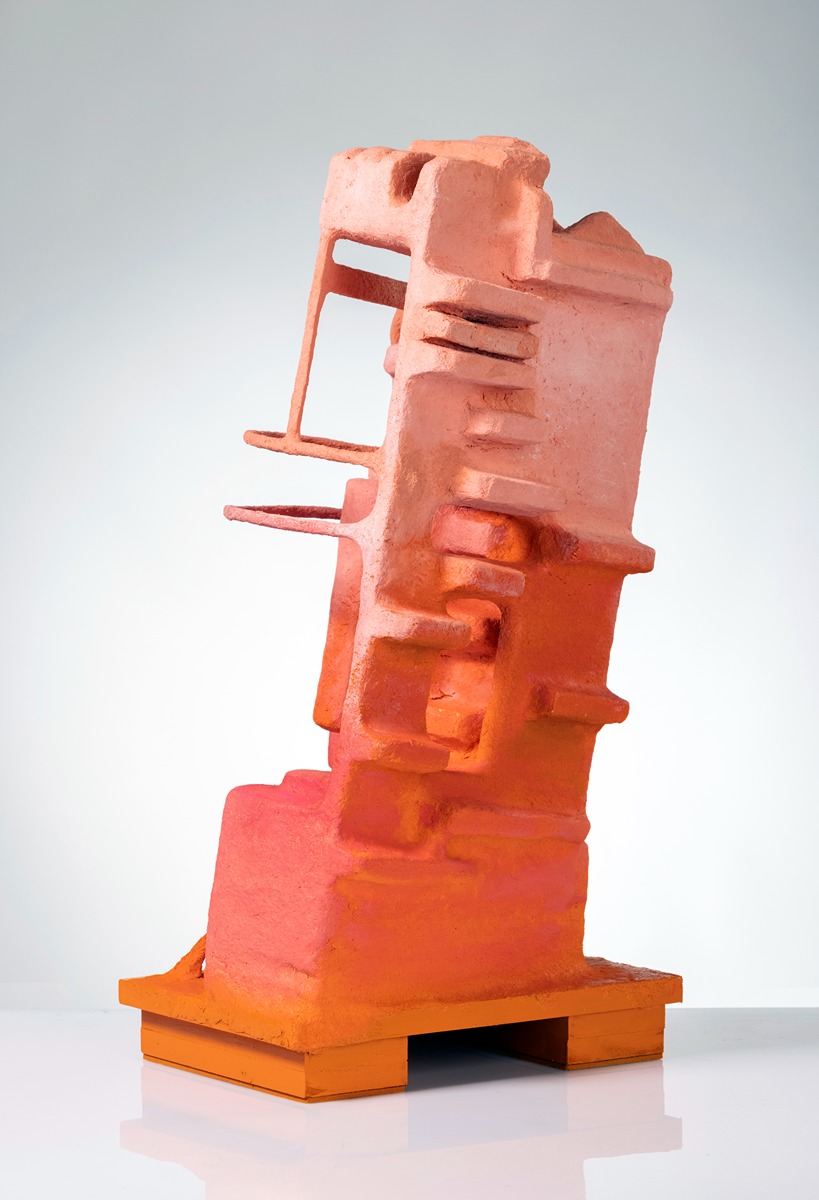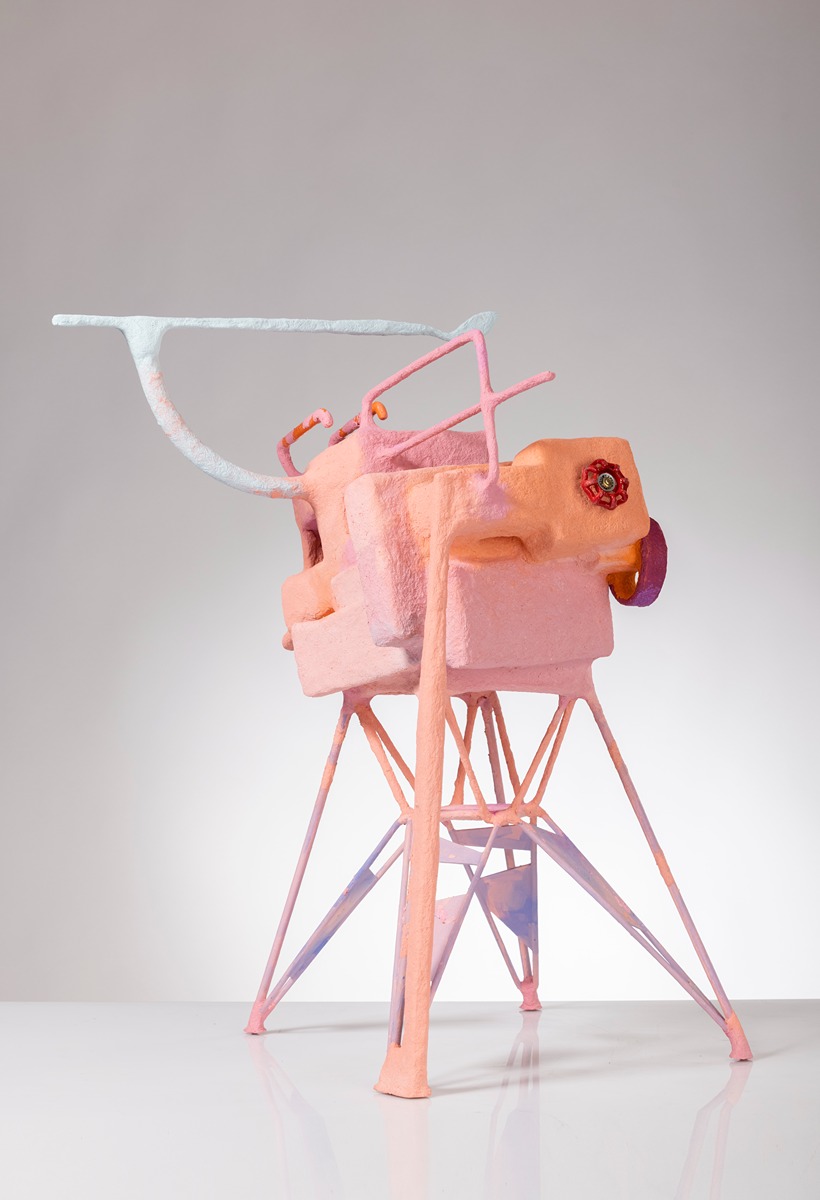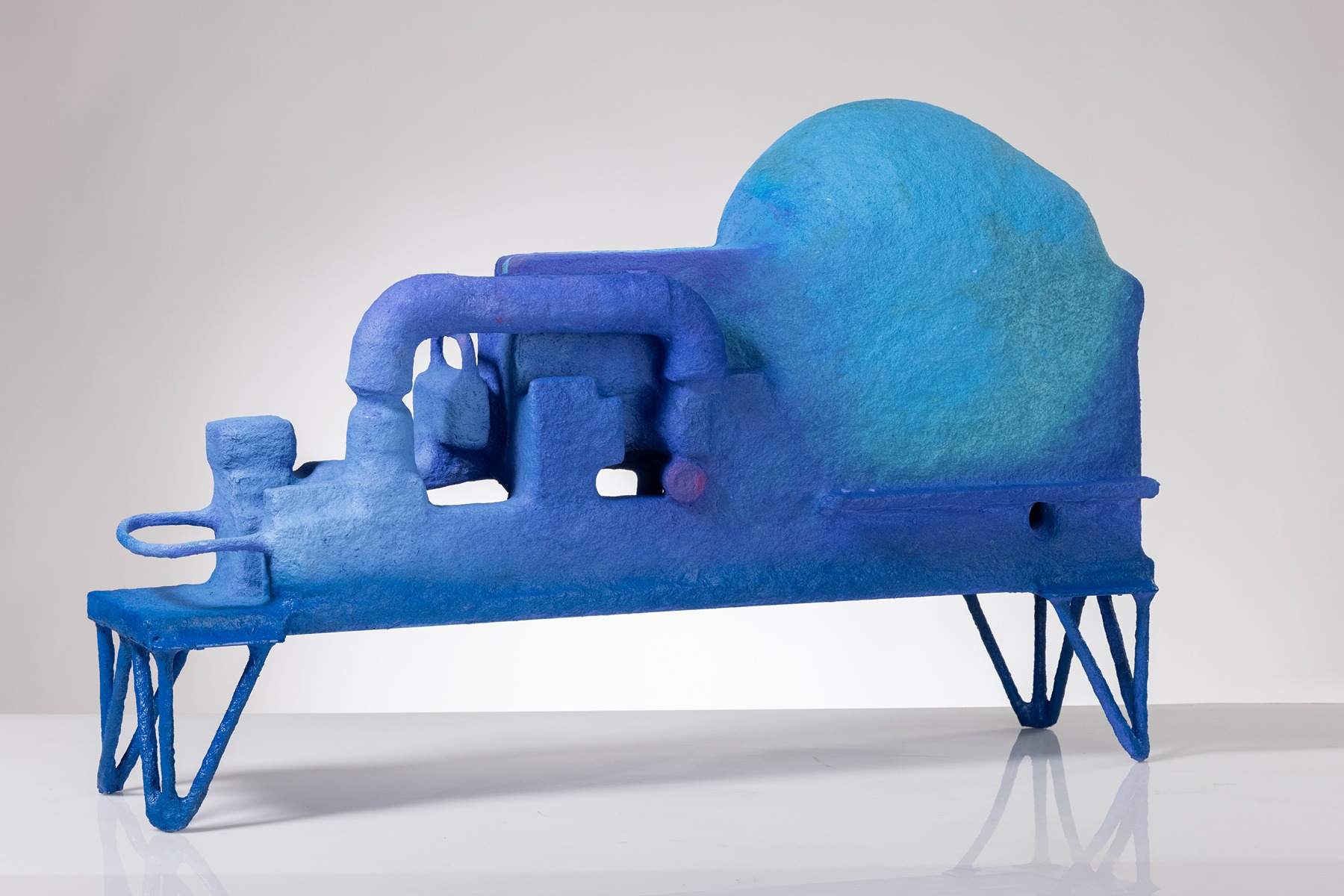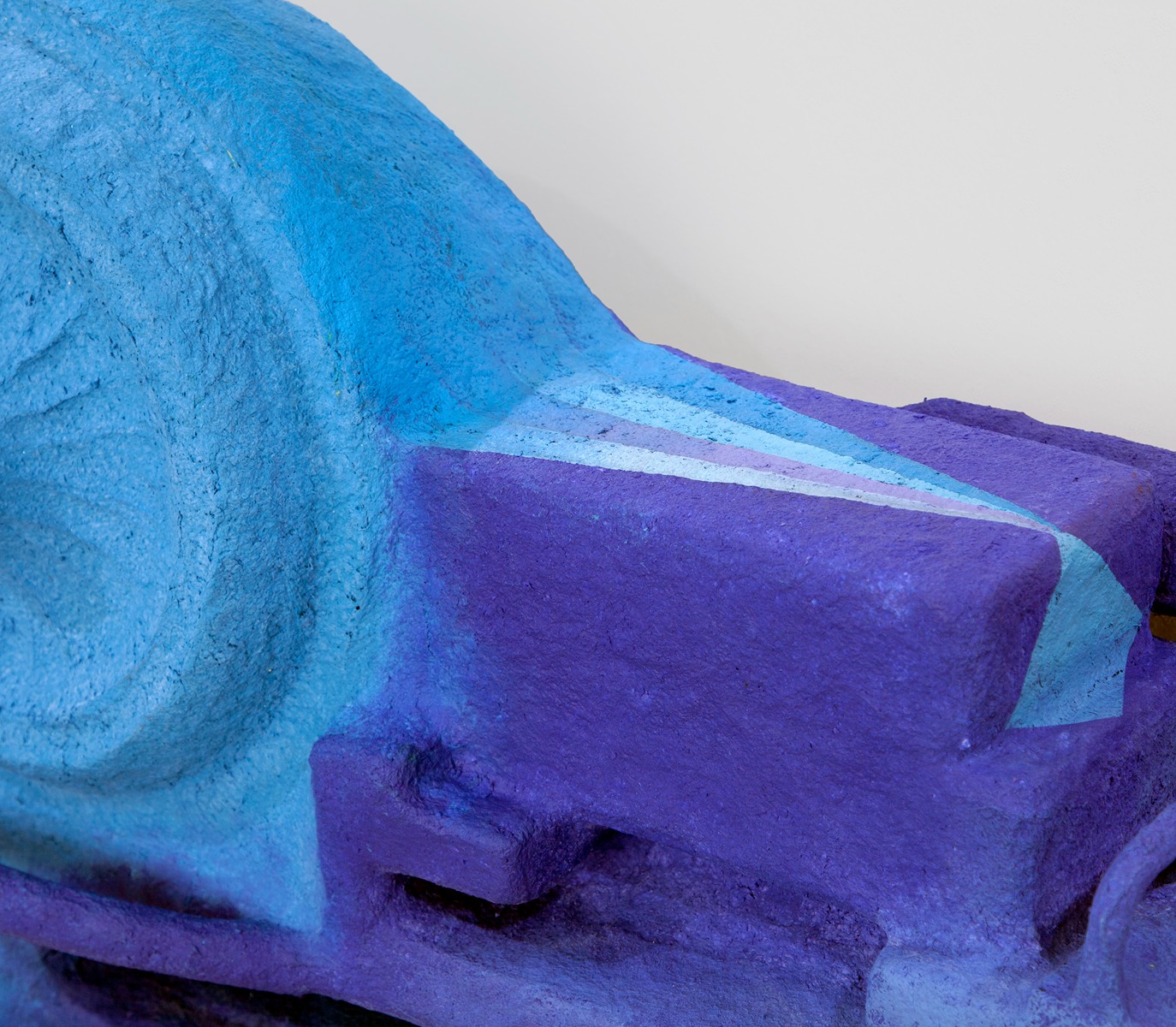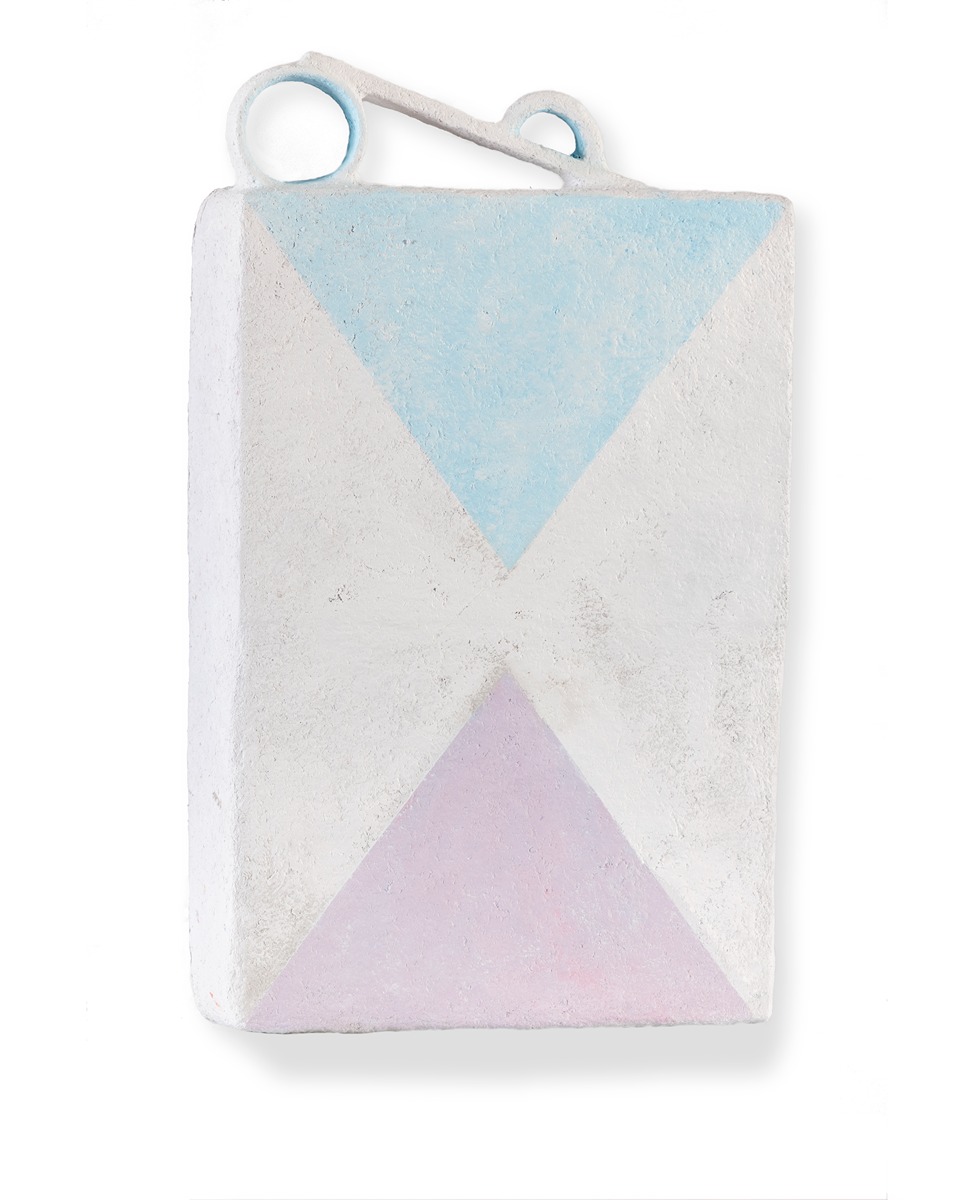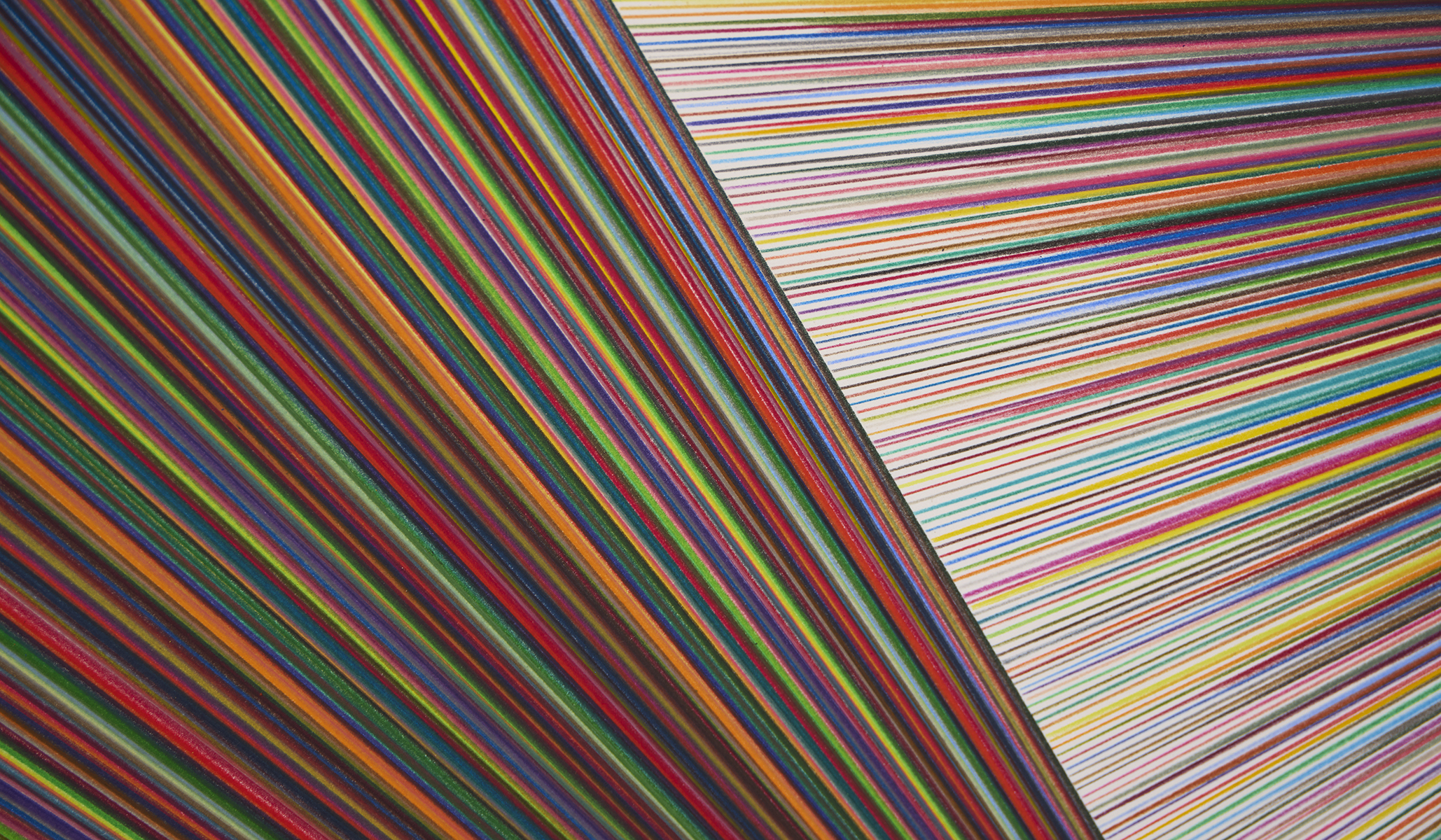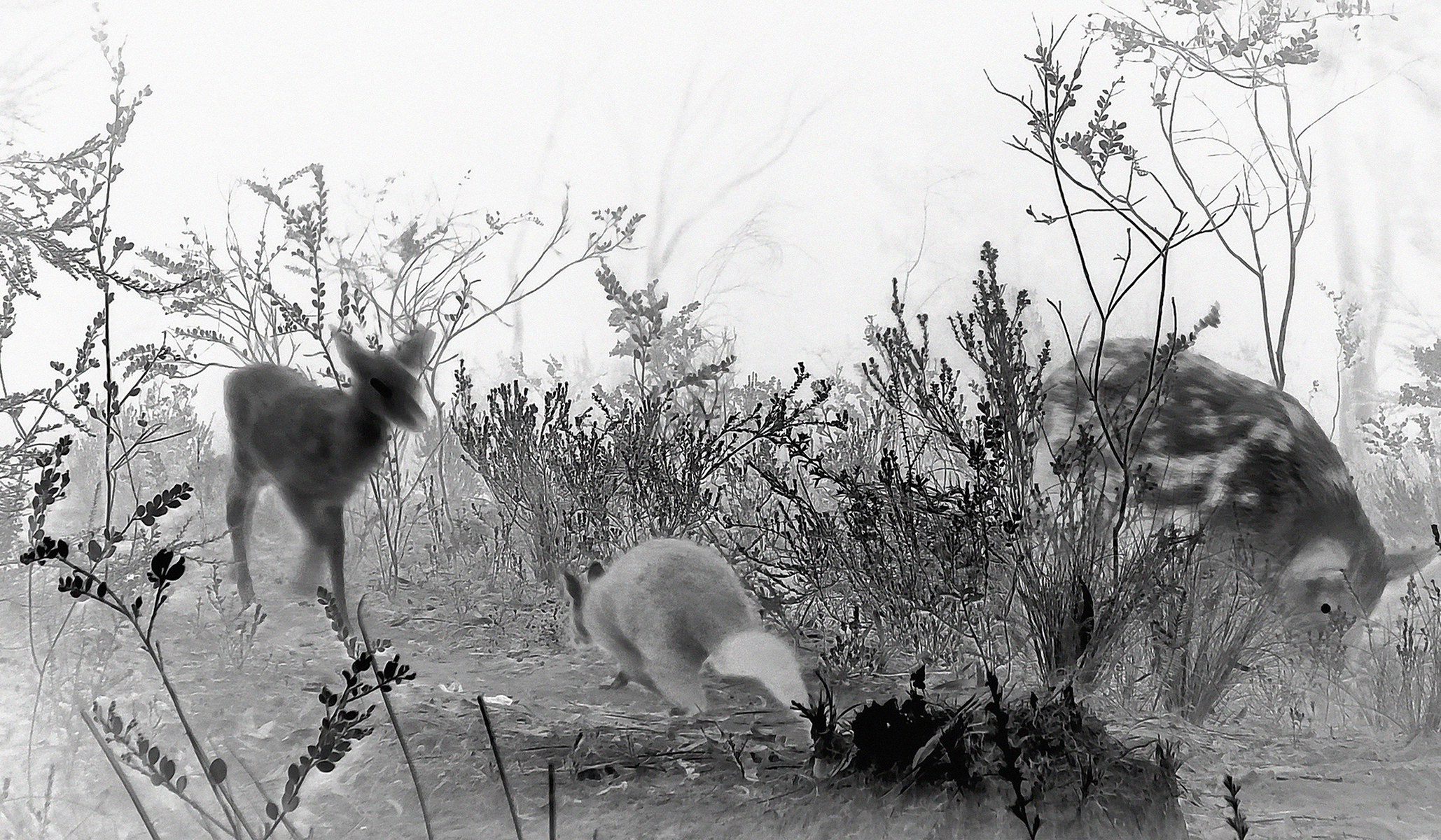Exhibition Opening Event:
Saturday 14 September from 2 – 5pm
Artist-activist Patrizia Biondi imbues found and recovered materials with new life and meaning. Through her philosophy and works she rails against material accumulation generated by our throw-away consumerist society and fuelled by global economics.
Her sculptures metabolise the detritus, the leftovers, the scraps, the obsolescent remnants from industry, home, agriculture and office; products from all aspects of everyday existence and outcomes of questionable environmental ethics. The artist’s creative process is a labour-intensive transmutation of salvaged resources, paper, cardboard, glass, timber and ceramics. She cleans, cuts, treats, paints, sands, pulps and constructs these elements into new aesthetic forms.
For Il Pretesto she creates a phalanx of dystopic mechanistic relics, constructions that herald their industrial origins while their futuristic somewhat robotic contours are softened, blurred and subsumed within a colourful and concealing hardened slurry in salmon and candy pinks, aqua blues, green and whites that the artist brews from recovered materials.
Salvaged commonplace objects are integrated into the structure of these works. Discarded taps, garden pipes and a sticky tape holder are among those that are incorporated within a brew that is a formula unique to the artist and made from multiple ingredients. Included are acrylic paint and various binding substances combined with copious quantities of shredded paper, formerly confidential documents, that are associated with her administration work with an Italian migrant welfare organisation. So many human lives and stories encapsulated within…
Her latest body of work exhibited at Artereal is triggered as a comment on the worldwide trend, frequently led by governments, for galleries and performance spaces colonising and white-washing industrial sites. The artist perceives the approach as often an inauthentic and subversive pretext. A ‘gentrification’ of industrial buildings and excavations through art; appropriating the non-threatening arts as a salve, a panacea, to cover up, to paint and paper over the toxic materials, machinery and manufacturing methods and questionable ethics and their sinister legacies.
Within her own artistic practice, the artist explores the idea of environmental sustainability. In her quest to make beauty out of detritus she implicates the all-important question – could environmental sustainability be a utopia? Conscious of the many contradictions that besiege much environmental discourse, Patrizia Biondi prefers not to refer to her own art as “sustainable”. Rather, she treats her art making as “a form of research, a way to sift through the many layers of environmentalism to understand its complexity”. While supporting the sustainability ideal, she rejects the triumphalism of the bandied terms of ‘sustainable art’ and “re-cycling”; especially when so much recovered material is contaminated and its collection and processing, as well as its disposal, often as landfill, are politically fraught and inefficient.
Patrizia grew up in Italy during the 1970s where she experienced years of fear, uncertainty, upheaval and socio-political changes brought about by social unrest and terrorism. This upbringing contributed to the focus on socio-political issues at the core of her artistic practice today.
Barbara Dowse
Curator
Il Pretesto, from Latin praetextum, is a disguise. Praetextum can also mean ‘ornament’. This is an interpretation that makes perfect sense. The pretext is a front – a metaphorically embellished surface meant to distract a witness from what really lies beneath. The word ‘sustainability’ is a praetextum. Bandied by governments and industries, the attribute ‘sustainable’ floods the airwaves and infiltrates our homes, our lives, our consciousness, but only to cover up governments’ laziness, conflicts of interest, incompetence and a plethora of other problems too complex to dissect, let alone attempt to solve. The examples that follow pertain to local issues in Australia, but they are emblematic of a certain apathy that characterises the world at large. The recycling crisis immediately jumps to mind. Good citizens have been trained to conscientiously and meticulously pull all the cheese off that pizza box, safe in the certainty that the cardboard can be properly recycled. It was only when China refused to import our obsolescent materials any longer, that it emerged that we were effectively using another country as our dumping ground due to a lack of local recycling infrastructure. China’s waste import ban compels one to wonder – does that clean pizza box now go back into the system or is it furtively buried in landfill? For all the talk about sustainability, peddled by honourable members from across the political spectrum, there is still very little to show for it. Passenger vehicles in Australia pollute more than similar vehicles in major car markets such as China, Japan, United States and Europe. Australia has, only this year, finalised a long-promised fuel efficiency standard.
Car emissions will produce less sulphur, progressively, over the period from 2025 to 2029. After many stakeholder consultation documents published since 2008, apparently it still requires five years to stop the use of dirty fuel. Yet, the mirage of sustainability persists. Post-industrial spaces are transformed into cultural institutions and proclaim themselves symbols of sustainability, even though their transformation and new operational running are likely to be anything but green. There are way too many problems to list in the limited space of an artist statement. The few that have been mentioned clearly render the idea – the word ‘sustainability’ covers up myriads of problems and contradictions. Such notion is at the core of this body of work. The objects evoke imagery of machines, technologies, industry, construction, relics – the cogs of the economy, the causes of global warming and the consequences of it. The structures are made with salvaged pvc pipes, polystyrene packaging, taps, chair parts, and all sorts of banal items that prove much easier to dispose of in landfill than to recycle. They are assembled and the final object is concealed by a mixture of pulp, made with recycled paper, and paint. The imaginative mind can only wonder about, and chance a guess about, what lies beneath. The same way we can only chance a guess about what ‘sustainable’ will look like, if we ever achieve it.
Patrizia Biondi
Artist Statement
ARTIST BIOGRAPHY
Patrizia Biondi has developed an international reputation for creating intricate, quasi-architectural constructions, built out of salvaged cardboard, which hover somewhere between traditional understandings of painting and sculpture. Having mounted exceedingly well-received shows in Australia, New Zealand, Italy and the USA, Biondi has cultivated a following of collectors who appreciate that underlying each of these seemingly abstract works is an avid interest in contemporary socio-political issues, with a particular emphasis on the relationship between the rapidly changing nature of society and the establishment of global finance as culture.
All prices are in Australian dollars and inclusive of GST. Freight costs not included. Prices are correct at the time of publication but may be subject to change without notice.
“Recovered Grocery Cardboard Box, Polystyrene Packaging, PVC Pipes, Bunnings Plastic-Coated Hanging Hooks, Resin, Binding Agents, Fungicides – All Meticulously and Sustainably Covered in Paper Pulp and House Paints.”
recovered grocery box, polystyrene packaging, pvc pipe, hanging hooks, resin, binding agents, paper pulp, acrylic paint
60 x 40 x 40cm
“Recovered Polystyrene Packaging, Generic Uninteresting Cardboard Box, Polystyrene Fruit Shop Boxes, Recovered Sought After Table Legs, Select Timber of Dubious Provenance, Resin, Binding Agents, Fungicides - Some Sections Meticulously and Sustainably Spray Painted, Some Sections Meticulously and Sustainably Covered in Paper Pulp and House Paints.”
recovered polystyrene packaging, grocery cardboard box, timber, resin, binding agents, paper pulp, acrylic paint
63 x 40 x 36cm
excluding plinth
165 x 90 x 60cm
including plinth
“Recovered Polystyrene Packaging, Duly Purchased Hanging Bracket, PVC Pipes, Resin, Binding Agents, Fungicides – All Meticulously and Sustainably Covered in Paper Pulp and House Paints.”
recovered polystyrene packaging, hanging bracket, resin, binding agents, paper pulp, acrylic paint
70 x 25 x 36cm
“Recovered Chair Parts, Post Office Boxes, Salvaged Polystyrene Packaging, Appropriated Tap, PVC Pipes, Bunnings Plastic-Coated Hanging Hook, Resin, Binding Agents, Fungicides – All Meticulously and Sustainably Covered in Paper Pulp and House Paints.”
recovered chair parts, post boxes, polystyrene packaging , tap, pvc pipe, hanging hook, resin, binding agents, paper pulp, acrylic paint
74 x 50 x 56cm
“Recovered Polystyrene Packaging, PVC Pipes, Anzac Biscuits Plastic Container Salvaged After the Biscuits Were Eaten, Odd Timber Bits, Resin, Binding Agents, Fungicides – All Meticulously and Sustainably Covered in Paper Pulp and House Paints.”
recovered polystyrene packaging, pvc pipe, timber, resin, binding agents, paper pulp, acrylic paint
37 x 60 x 39cm
“Recovered Polystyrene Packaging, Retrieved Lamp Base, PVC Pipes, Wobbly Timber Bits, Bequeathed Hair Pin Legs, Reclaimed Bar Stools, Cherry-Picked Timber, Resin, Binding Agents, Fungicides – Some Sections Meticulously and Sustainably Spray Painted, Some Sections Meticulously and Sustainably Covered in Paper Pulp and House Paints.”
recovered polystyrene packaging, found lamp base, pvc pipe, resin, binding agents, paper pulp, acrylic paint
57 x 90 x 22cm
excluding plinth
140 x 123 x 29cm
including plinth
$4,750 including plinth
“Gifted Salad bowl, Saved Blueberry Punnet, Salvaged Holden Radiator Reservoir, Duly Gotten Chicken Wire, PVC Pipes, Rescued Centenary Timber, Resin, Binding Agents, Fungicides – All Meticulously and Sustainably Covered in Paper Pulp and House Paints.”
recovered salad bowl, blueberry punnet, found Holden radiator reservoir, chicken wire, pvc pipe, timber, binding agents, paper pulp, acrylic paint
53 x 40 x 36cm
“Saved Computer Cardboard Packaging, Recovered Polystyrene Packaging, Rickety Timber Parts, Honourably Appropriated Sticky Tape Dispenser Parts, Resin, Binding Agents, Fungicides – All Meticulously and Sustainably Covered in Paper Pulp and House Paints.”
recovered computer cardboard packaging, polystyrene packaging, timber, sticky tape dispenser parts, binding agents, paper pulp, acrylic paint
60 x 37 x 7cm
“Recovered Shoe Boxes That Had 1 Dodgy Italian Shoe in Them, Wobbly Timber Bits, Appropriated Garden Tap, Resin, Binding Agents, Fungicides – All Meticulously and Sustainably Covered in Paper Pulp and House Paints.”
recovered shoe boxes, timber, garden tap, binding agents, paper pulp, acrylic paint
48 x 31 x 11cm


